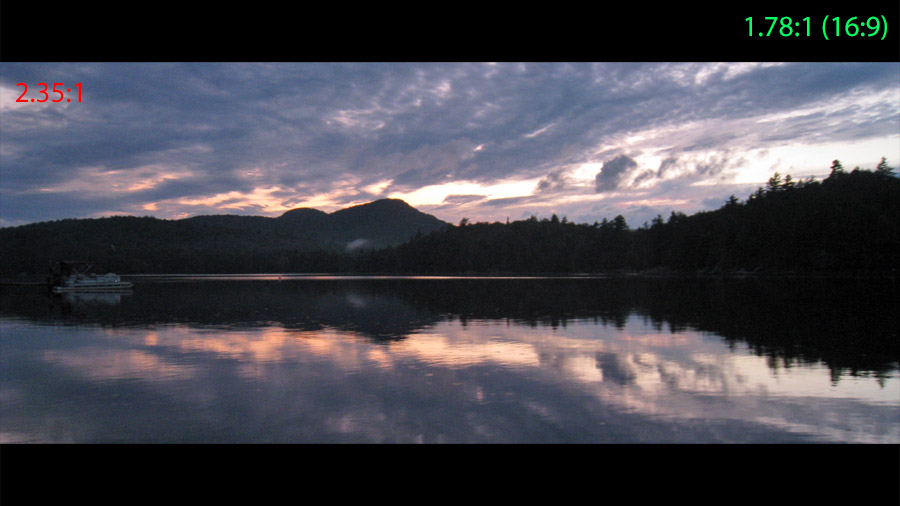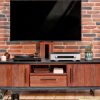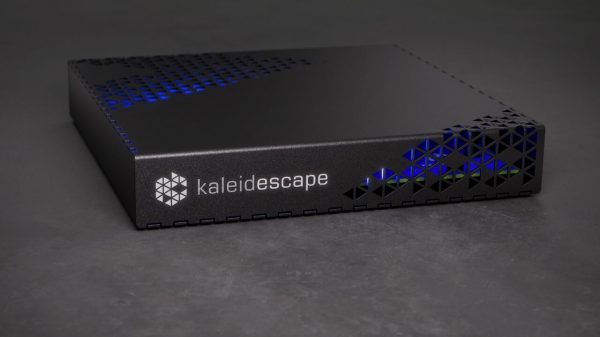Last Update: April, 2024 (added information on IMAX aspect ratios)
Aspect Ratio is a term that defines the shape or relative dimensions of a still image, film or video content. It is also used to describe the shape of a TV screen or projection screen used to display still images, film or video content. Aspect Ratio is usually represented in one of two ways: as a ratio of width to height in integers (e.g. 4:3, 16:9, 21:9) or as a decimal figure (e.g. 1.33:1, 1.78:1, 2.35:1). These two formats convey the same meaning in slightly different ways.
As an example, analog TV broadcasts were typically delivered and displayed in a 4:3 (or 1.33:1) aspect ratio. This means that for every four units of measurement across the screen from left to right, you’d have three units from top to bottom. In other words a TV screen that was four feet wide would be three feet high. This can be represented as 4:3 or as 1.33:1, because the width is 1.33 times the height. The 4:3 screen shape is a not-very-wide rectangle.
Historically, 4:3 was the original aspect ratio for film and was called the “Academy Aperture.” Classic films like “Casablanca,” “The Wizard of Oz” and “Gone with the Wind” were all shot and composed with a 4:3 aspect ratio and were originally released in theaters that way. As broadcast television was introduced, it adopted the same aspect ratio as film and movie theaters. This made sense as it allowed TVs to display theatrical movies without any loss of image or wasted space.

When the motion picture industry began to see TV as a threat, they started making movies in wider and wider aspect ratios. This gave consumers a reason to come back to theaters. It put “butts in seats” as the expression goes. That ultra wide CinemaScope or Panavision film experience was something you simply couldn’t get at home.
As DVDs came out, films would frequently be released in a widescreen (16:9 or even 2.35:1) format on disc. This led to black bars at the top and bottom of the screen on a 4:3 television. This is known as “letterboxing.” Some folks found this annoying, but most understood that it is simply a case of trying to fit a rectangle into a square hole. Either you wind up with black space at the top and bottom, or you cut off the edges of the rectangle. And no one wants to chop off the sides of a movie.

A process known as “pan and scan” was one solution to the letterbox problem. If you want to use the whole screen of a 4:3 TV to display a 2.35:1 movie, you can’t just focus on the middle of the screen and cut off the edges, otherwise you would potentially lose meaningful picture information. So instead, the telecine transfer team chose which area of the screen to focus on throughout the film and would “scan” the important part of the frame and crop out whatever they deemed the “non-essential” part of the image.
If there were an on-screen conversation between two characters, they may have chosen to move the area of focus (pan) from one character to the other while they spoke, where in the original film, both characters were visible on screen at the same time. Needless to say, film purists were not generally fans of this process as it was a clear departure from the film-maker’s original intent. This technique is still widely used in the airline infotainment industry, “The following film has been modified from its original version. It has been formatted to fit this screen.”
As the HDTV standard was adopted, the industry moved to a 16:9 format, which is wider than the old 4:3 analog broadcast standard, but still not as wide as many theatrical releases. Most TV shows produced for HDTVs and 4K TVs are composed and delivered in a 16:9 aspect ratio so they perfectly fit on a 16:9 screen. But movies are delivered in many different aspect ratios: 1.78:1, 2.0:1, 2.35:1, 2.39:1, etc. So even to this day when you watch a movie on a widescreen 16:9 television, you may see black bars at the top and bottom of the screen. There’s not much that can be done to “fix” this: again, you’re trying to fit a really wide rectangle into a slightly less wide rectangle and this means you’re going to get black bars at the top and bottom of the screen.

To make matters even more complicated, many studios are now creating TV series in these same ultra wide aspect ratios, in an attempt to make them more “cinematic.” Ultimately, film-makers and TV show creators decide which aspect ratio to use for their material, but this is leading to a mish mash of aspect ratios across different movies and TV shows. “Game of Thrones” was shot and presented in 16:9 (1.78:1) but its prequel “House of the Dragon” is delivered on HBO in 2.0:1 aspect ratio. The “Foundation” series on Apple TV is also composed and presented at 2.0:1. The “Star Wars” episodic TV series (“The Mandalorian,” “Book of Boba Fett,” “Obi Wan Kenobi” and “Andor”) are all shot and presented in CinemaScope 2:39:1. And Amazon’s “Lord of the Rings” prequel “The Rings of Power” is also shown in 2.39:1 aspect ratio. So those watching these TV shows on an HDTV or 4K TV (or even an 8K TV) will see black bars at the top and bottom of the screen.
There is actually a solution to this issue that allows you to see films and TV shows at home as the filmmakers intended, and without black bars on the top and bottom of the screen. It’s called a “Constant Image Height” (CIH) system, and it is available on select home theater projectors and screens. Find out more in our companion piece, “WTF is Constant Image Height (CIH)?“
IMAX, the Outlier
IMAX took the movie theater experience in a different direction. Instead of going wide, they went tall. The original IMAX aspect ratio was 1.43:1 (only slightly wider than an old-fashioned TV screen), but the IMAX screens were massive: up to 6 stories tall. Even the IMAX film stock was huge: about 10 times larger than a standard 35 MM film. IMAX was originally a bit of a novelty, with IMAX theaters typically installed in museums, and the content was mostly limited to visually stunning documentaries about nature and space.
Over time, mainstream film-makers embraced the IMAX standard for full-length feature films. And, as many things did, the format transitioned from analog to digital. And with this digital transformation, IMAX settled on a new wider aspect ratio of 1.9:1. Screens in IMAX theaters still tend to be very large (though maybe not six stories tall) and this leads to a truly immersive experience for the viewer.

Many movies made for IMAX these days feature variable aspect ratios. Certain scenes of the film are expanded to the full 1.9:1 aspect ratio for dramatic effect, while the rest of the film is presented in a more standard cinematic widescreen aspect ratio like 2.35:1 or 2.40:1. The 1.9:1 IMAX aspect ratio is a closer match to today’s HDTV standard of 16:9 (1.78:1), so these IMAX-enhanced scenes displayed on modern HD, 4K and 8K TVs and projectors can use up to 26% more of the screen than the traditional 2.35:1 ultra wide content.
Variable aspect ratio content can present a challenge to CIH (Constant Image Height) projection-based home theater systems, but typically the streaming services that display IMAX Enhanced content also offer these same movies in a fixed aspect ratio version as well.
Related Reading:















































Mike
November 12, 2022 at 2:55 pm
This leaves out 137 and 239 which are very common
Chris Boylan
April 21, 2024 at 6:32 pm
1.37:1 and 2.39:1 are functionally equivalent to 1.33:1 and 2.35:1 respectively. The amount of window-boxing or letterboxing you get when displaying 2.39:1 content on a 2.35:1 screen is practically un-noticeable. Same for 1.37:1 content on a 1.33:1 screen.
It is worth talking about IMAX aspect ratio (1.43:1) and IMAX Enhanced or IMAX Digital aspect ratio (1.9:1), so I will update of this article to discuss those options.